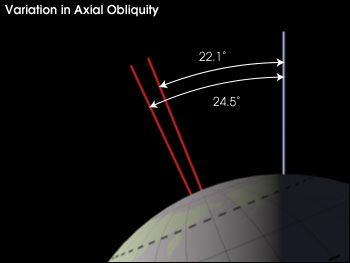By Heidi Toth
NAU Communications
Michael Erb knew that changes in the Earth’s axial tilt affects climate, as evidenced in Antarctic ice cores which span the past hundreds of thousands of years. What he didn’t know until his latest research project was how the climate signals recorded in these ice cores might differ depending on whether they are preferentially recording a particular part of the year.
Erb, a postdoctoral scholar in the School of Earth Sciences and Environmental Sustainability at Northern Arizona University, is the lead author on a study published this week in Nature Communications that compares climate responses simulated in climate models to those inferred from long proxy records like ice cores.
Knowing that past climate has varied in response to changes in the Earth’s orbit as well as slow feedbacks associated with changes in greenhouse gases and ice sheets, Erb and his colleagues ran general circulation model simulations to isolate the effects of each of these factors on the climate system. Using these simulations, he could estimate the effect of different factors on past climate, both for the annual-mean climate as well as different months.
The most interesting result, Erb said, is related to obliquity. Obliquity is the tilt of the Earth’s axis, which is 23.5 degrees but varies between about 22 and 24.5 degrees on a 40,000-year cycle. Changing the Earth’s obliquity slightly alters the distribution of solar radiation across the planet, which affects climate. In Antarctica, these changes in tilt affect temperatures more in some seasons than others, which may be a useful clue when interpreting the climate variations recorded in ice cores.

However, this doesn’t mean all of the interpretations made by looking at ice cores as an annual measurement are bad. The bulk of temperature changes over the past few million years is related to changes in greenhouse gases and ice sheets, and those are less seasonal, so temperature change related to those factors is recorded relatively accurately regardless of any seasonal preference in the ice cores.
About the Earth’s changing tilt
Regular humans will never notice it, but the Earth’s tilt shifts naturally over time. This cycle is one of three so-called “Milankovitch cycles,” which are changes in the Earth’s orbit related to slight gravitational attractions of other objects in the solar system. Scientists believe these cycles, which take place over tens of thousands of years, were instrumental in causing the ice ages over the past several million years. These cycles do not, however, factor into the current conversation about people’s role in climate change, Erb said.



